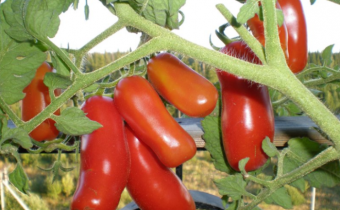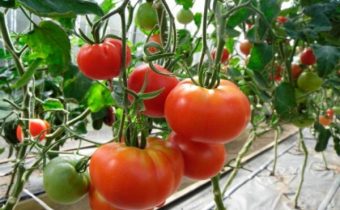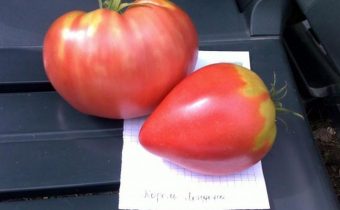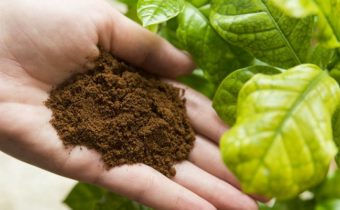How to feed tomato seedlings to be plump?

Tomato culture is unpretentious, it is easy to tolerate transplanting, and tomato seedling fertilizer is one of the most favorite methods in agricultural technology. Oh, very good seedlings for feeding respond. What fertilizers are better, how to make them, and when to apply them correctly, let us analyze them today.
Feeding seedlings of tomatoes at home
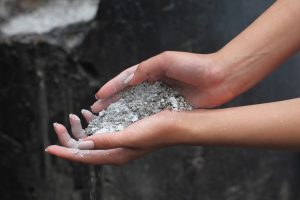 When a person goes to the market for seating, then a not very good view often opens before him. Saplings cost a lot, but they themselves are thin and elongated. In order for the plants to gain strength as quickly as possible, after which they give a good harvest, you need to feed them. The same should be done during the cultivation of seedlings with their own hands at home.
When a person goes to the market for seating, then a not very good view often opens before him. Saplings cost a lot, but they themselves are thin and elongated. In order for the plants to gain strength as quickly as possible, after which they give a good harvest, you need to feed them. The same should be done during the cultivation of seedlings with their own hands at home.
It is also important that fertilizing is necessary not only for seedlings, but also in the fall into the soil, so that the seedlings can actively begin to grow after being transferred to the street or to the greenhouse.
Top dressing can be of two types:
- mineral.
They are purchased in stores for gardeners. They help to grow seedlings well, but they can also accumulate in fruits. Therefore, they need to be made carefully, in accordance with the recommendations on the packaging and at a certain time;
- organic.
These folk recipes have been used by summer residents for hundreds of years. Their essence is to use natural products for dressings that will not harm health, but will give a very good result.
So, how to feed tomato seedlings to be plump. We think that is exactly the question that every summer resident asks.
See also:Diseases of tomatoes in the greenhouse, photos and their treatment
Organic Tomato Feeding
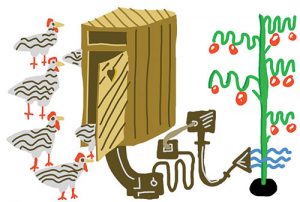 One of the most beloved "treats" for tomatoes is manure and bird droppings. But they can not be added fresh, as the fertilizer will burn the delicate fabrics of seedlings.
One of the most beloved "treats" for tomatoes is manure and bird droppings. But they can not be added fresh, as the fertilizer will burn the delicate fabrics of seedlings.
Better to feed use mullein. It is very good to make a tomato under the first days of life and during active growth. For disinfection of diseases in the mullein, you can add a little manganese in dissolved form.
Among the popular recipes for dressing tomato is also common to make ash. It itself doesn’t have much effect on crop growth, but if you combine fertilizer with other feedings, the result will be obvious. Ash contains a number of important elements in the composition.
Of course, not do without chicken litter. It is very concentrated, because it must be diluted with water in a ratio of 1: 14-15. It is necessary to bring in a season 2-3 times, not allowing hit of a litter on foliage.
An important point!
Do not feed tomatoes immediately after planting with such a strong fertilizer, like chicken droppings. It is best to do this in 3-4 weeks after transferring the seedlings. It is also better to feed after irrigation or rain in the evening.
Manure can also be used for feeding in the following form. Fresh manure is collected and put into a trough-type container. Then pour water and allow to stand for 7-10 days. Next, take 500-700 grams of liquid dressing, pour into a bucket of water and bring under the tomatoes. During the season, you can produce 2-3 such dressing.
For information!
Chicken droppings need not be collected by yourself. Nowadays there is already ready dry fertilizer, which is called “Chicken droppings”. In the manual you can find all the recommendations.
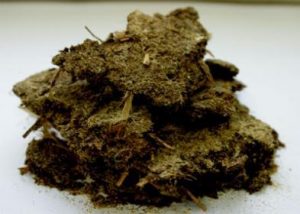 Another commonly used recipe is to feed tomatoes with iodine solution. It is necessary to take 10 grams, then pour into a bucket of water.For a better effect, you can add 20 grams of potassium and 10 grams of phosphorus here. Then pour the fertilizer in half a liter under a bush.
Another commonly used recipe is to feed tomatoes with iodine solution. It is necessary to take 10 grams, then pour into a bucket of water.For a better effect, you can add 20 grams of potassium and 10 grams of phosphorus here. Then pour the fertilizer in half a liter under a bush.
What other fertilizers do tomatoes need? Simply and easily, you can feed the seedlings with compost, which each gardener can prepare in his own area in advance. In the compost pit, you can add anything: weeds, tops, cleaning, skins from vegetables and fruits.
The same can be said about the infusion of weeds. A very budget way to fertilize tomatoes. The weeds that you picked during the weeding are folded into a bucket, poured with water and infused. It feeds nettle culture very well. Such a subcortex can be poured in several times a season, there will be no harm from it.
Tomatoes respond well to urea. It is brought during planting in each well, and this will be enough for the even and good development of seedlings for the entire season.
Another proven feeding method is yeast. Preparing the solution is simple: pour a bag of yeast into a bucket of water, let it stand for a day and pour 200-300 ml of tomatoes under each bush. But it is impossible to over-pour saplings with yeast, as they will attract many microorganisms, insects.
See also:Tomatoes on the balcony. Growing step by step
Shop preparations for feeding tomatoes
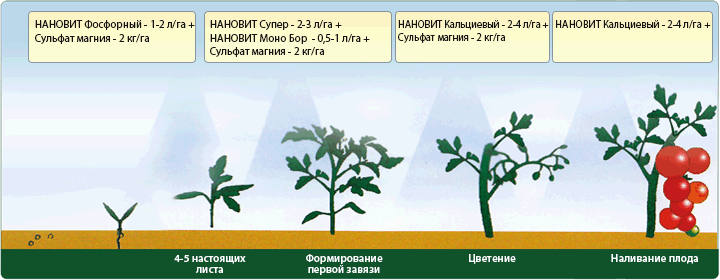 Folk remedies can effectively affect the yield, but for those summer residents who do not trust such simple recipes, there are various supplements from stores. They have different cost and effect. But do not forget that such fertilizers are made from chemistry, and it can accumulate in the fruit and get into the body with them.
Folk remedies can effectively affect the yield, but for those summer residents who do not trust such simple recipes, there are various supplements from stores. They have different cost and effect. But do not forget that such fertilizers are made from chemistry, and it can accumulate in the fruit and get into the body with them.
All store dressing can be divided into:
- nitrogenous;
- phosphoric;
- potash;
- complex.
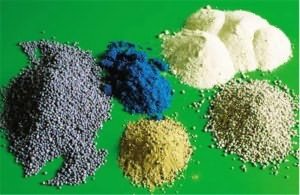 Ammonium sulphate, ammonium nitrate, carbamide and others are nitrogen fertilizers. But this type of fertilizer makes the soil more acidic, because after using them, it is better to lime the soil.
Ammonium sulphate, ammonium nitrate, carbamide and others are nitrogen fertilizers. But this type of fertilizer makes the soil more acidic, because after using them, it is better to lime the soil.
Phosphate fertilizers include superphosphates. Top dressings in the form of powders, and also in a granulated form are issued.
Potash fertilizers for tomatoes are potassium sulphate and sulphate. These fertilizers are used frequently, but the most popular and sought-after drugs are still complex fertilizers.
Such supplements combine the optimal balance that a particular culture needs. Preparations can have a universal purpose, can be produced separately for different types of crops. All proportions are always described on the packages of such complex preparations, there are also recommendations regarding periods of application.
The most popular in recent years are:
- Kemira Universal-2;
- "Universal";
- Ammophos;
- "Mortar";
- "Monophosphate";
- "Calcium nitrate".
See also:Planting tomatoes in the greenhouse requires a competent approach
When do you need to feed tomatoes?
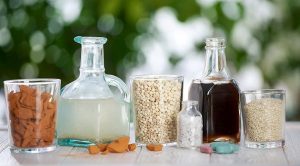 Each summer resident observes his deadlines for fertilization. Someone has developed them for years of experience, someone strictly follows the recommendations on the packaging. Definitely it can be said that it is impossible to feed with chemical fertilizers at the time of the formation of the fruit. During this period it is better to use environmentally friendly dressings. That is, fit different infusions on weeds, yeast irrigation, infusions on mullein.
Each summer resident observes his deadlines for fertilization. Someone has developed them for years of experience, someone strictly follows the recommendations on the packaging. Definitely it can be said that it is impossible to feed with chemical fertilizers at the time of the formation of the fruit. During this period it is better to use environmentally friendly dressings. That is, fit different infusions on weeds, yeast irrigation, infusions on mullein.
It is good to feed the seedlings at the stage of transplantation, that is, to apply fertilizer directly into the well. But you can not fertilize the root immediately after planting. Need to squeeze about 2-3 weeks.
It is also important on what soil you are planting seedlings. That is, you need to take care of fertility in the fall or spring, introducing humus, compost, manure and so on into the soil.
Further, top dressing is important at the stage when your seedlings are still at home. Initially, it will be enough and those nutrients that are in a special soil. But after thinning the seedlings is better to feed.
Feeding a tomato after picking is an important issue, because the seedlings, after they have been thinned, need special attention.The seedlings in the early stages of development are very fragile, while thinning it is easy to damage the thin stems, yes, and after transferring to a new container, the seedlings can adapt for a long time. But in the first two weeks after the picking, it is better not to feed the seedlings. After 10-12 days after thinning add the following fertilizer: add urea in a bucket of water in a volume of five grams, then superphosphate - 30 grams, potassium sulfate - 10-15 grams. All mix and shed under the root of seedlings.
After another two weeks, repeat the procedure. Only in a bucket of water already dissolve the same components, increased by 1.5-2 times each. Seedlings by this time should already get a strong, healthy look.
Tip!
To seedlings grew more rapidly and actively developed, combine root dressings and foliar. That is, use a complex fertilizer for tomatoes as a spraying. But never spray the seedlings during the day.
If you follow the recommendations and landing dates, your result will always be the one to be proud of. Any cultures respond very well to good agricultural practices.


